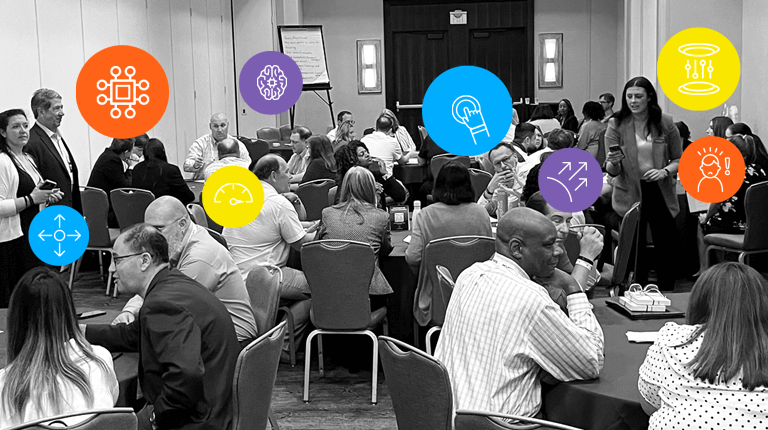Consumers are more connected than ever before. In the last few years, businesses have been in a race to add channels of communication to better reach their customers where they are. And it has worked, to an extent. I now have the capability to schedule a doctor’s appointment through an app. I can pay my credit card bills through my smart speaker, without even having to pick up my phone. I can do my entire week’s grocery shopping online without even leaving my couch.
But these transactions don’t always work as smoothly as intended. Sure, the actual booking of my doctor appointment through the app worked well. But, once I got to the doctor’s office, I was asked to resubmit my insurance information because the new booking system and current patient system were not integrated.
Maybe not a huge nuisance, but these types of mis-integrations can cause a lot of headaches and ultimately derail the original effectiveness of a digital transformation. As we see businesses embrace digital transformation, it’s becoming clear that it’s not enough to just focus on the customer experience.
To truly succeed at digital transformation, businesses must consider the three pillars of digital experience:
- customer experience
- agent/employee experience
- business system integration
By only focusing on customer experience, businesses are missing a huge opportunity to streamline the behind-the-scenes operations which ultimately makes a better experience for agents, employees, and customers.
Let’s back up. What exactly is digital experience?
Digital experience (DX) is how all digital functions and touchpoints in a company weave together to form the most productive output. It is a cross-functional collaboration that requires both customer facing and non-customer facing initiatives. There is currently no standard measurement for digital experience, like the way CSAT can rate a company’s customer experience, but tools like customer journey mapping can help unveil where digital experience might be falling short.
For example, let’s take a look at virtual agents, such as Interactions Intelligent Virtual Assistant (IVA), which are a common digital transformation initiative. By implementing an IVA, both customer experience and the entire digital experience can be improved. While many Conversational AI solutions simply act as a front door to an often messy back-end business, a truly successful solution will be implemented in a way that supports what the customer sees, what the agents and employees see, and how the business systems are connected.
What’s in a name?
You may be thinking to yourself that all of these are starting to sound the same. Digital transformation, digital experience, customer experience, customer journey. What is the point of adding one more term that may just end up confusing everyone? The point is it doesn’t really matter what we call it, as long as we are clear as how we define it. Customer experience often refers only to what the customer is experiencing, which ignores the behind-the-scenes functionality that may affect something later on in the customer experience. The digital experience, or the way that we define it, is the experience in its entirety, regardless if the customer ever notices.
How to achieve a better Digital Experience
And now what we’ve all been waiting for: how does a business move from a disjointed to a seamless digital experience? We’ve compiled a basic outline of how your business should approach moving toward a complete digital transformation.
EVALUATE THE CURRENT STATE:
-
- Before setting up an end destination, we need to look at a map. Customer journey mapping is a great way to get the big picture view of what is happening at your company. You can read all about customer journey mapping and how to start the initiative at your company here. You can also follow the same principles of customer journey mapping, but instead create a digital journey map. This will evaluate the agent experience as well as how business systems work together currently.
DO YOUR RESEARCH:
-
- Use data. Then use more. Why would you invest in technologies and solutions that might not support your customers? Don’t ride the hype, evaluate your customers, agents, and employees to understand what would improve their experience.
SET YOUR GOAL:
-
- What does success look like at your company? Keep in mind that AI is not a strategy (or any technology for that matter), but rather a tool. Focus instead on how you would want the digital experience map to look in an ideal world, before looking at what technologies are needed. It’s easier to find a recipe then buy your ingredients, versus buying ingredients and then choosing a recipe.
WORK TOGETHER:
-
- This is where a lot of digital transformation falls apart, especially in large enterprises where working across teams can be difficult, let alone across departments. Creating a role or organization whose primary focus is to lead digital transformation across all functions is a great way to break through the barriers. Or, assign digital transformation leaders from each department to collaborate for an effective cross-company initiative.
Keep in mind that business transformations like this are often long and complicated processes. In fact, if you’re looking at a solution that makes it seem simple, it’s probably only touching the surface. Our advice? Take your time and do it right. Otherwise, you’ll just have to do it over again in a year or two. Read our eBook about digital transformation to dive deeper into how your business can progress from its current digital state into a more effortless, productive, and seamless digital experience.




